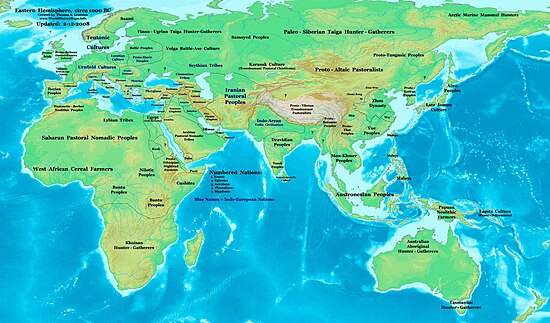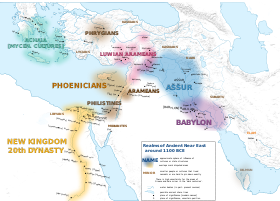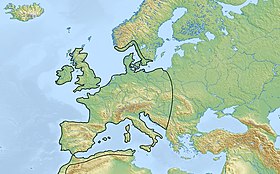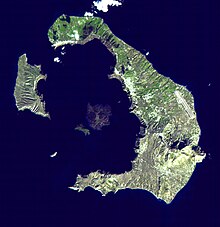2nd millennium BC
| Millennia: | |
|---|---|
Centuries :
|
The 2nd millennium BC spanned the years 2000 BC to 1001 BC. In the Ancient Near East, it marks the transition from the Middle to the Late Bronze Age. The Ancient Near Eastern cultures are well within the historical era: The first half of the millennium is dominated by the
Other regions of the world are still in the prehistoric period. In Europe, the
The world in the 2nd millennium BC

History
| Bronze Age |
|---|
| ↑ Chalcolithic |
| ↓ Iron Age |
See the article on chronology of the ancient Near East for a discussion regarding the accuracy and resolution of dates for events of the 2nd millennium BC in the Near East.
Middle Bronze Age
Spending much of their energies in trying to recuperate from the chaotic situation that existed at the turn of the millennium, the most powerful civilizations of the time,
Egypt and Babylonia's military tactics were still based on foot soldiers transporting their equipment on donkeys. Combined with a weak economy and difficulty in maintaining order, this was a fragile situation that crumbled under the pressure of external forces they could not oppose.
Unrest of the 16th century
About a century before the middle of the millennium, bands of
Late Bronze Age
The people in place were quick to adapt to the new tactics, and a new international situation resulted from the change. Though during most of the second half of the 2nd millennium BC several regional powers competed relentlessly for hegemony, many developments occurred: there was new emphasis on grandiose architecture, new clothing fashions, vivid diplomatic correspondence on clay tablets, renewed economic exchanges, and the New Kingdom of Egypt played the role of the main superpower. Among the great states of the time, only Babylon refrained from taking part in battles, mainly due to its new position as the world's religious and intellectual capital.
The Bronze Age civilization at its final period of time, displayed all its characteristic social traits: low level of urbanization, small cities centered on temples or royal palaces, strict separation of classes between an illiterate mass of peasants and craftsmen, and a powerful military elite, knowledge of writing and education reserved to a tiny minority of scribes, and pronounced aristocratic life.
Near the end of the 2nd millennium BC, new waves of barbarians, this time riding on horseback, wholly destroyed the Bronze Age world, and were to be followed by waves of social changes that marked the beginning of different times. Also contributing to the changes were the Sea Peoples, ship-faring raiders of the Mediterranean.
Empires and dynasties

- Ancient Near East
- Middle Kingdom of Egypt
- New Kingdom of Egypt
- Old Assyrian Empire
- Middle Assyrian Empire
- Elam
- Hittites Old Kingdom in Anatolia
- Vedic India
- Bronze Age China
- Shang Dynasty
- Zhou Dynasty
- Africa
Prehistoric cultures
- Europe

Europe is still entirely within the prehistoric era; much of Europe enters the Bronze Age early in the 2nd millennium.
- Aegean civilization
- Cycladic culture
- Helladic period
- Minoan civilization
- Mycenaean Greece
- Beaker culture
- Terramare culture
- Tumulus culture
- Unetice culture
- Urnfield culture
- Central Asia
- Andronovo culture
- Oxus civilization
- East Asia

- South Asia
- Ahar–Banas culture
- Cemetery H culture
- Indus valley civilization
- Jorwe culture
- Malwa culture
- Ochre Coloured Pottery culture
- Americas
- Olmec
- Sub-Saharan Africa
The desiccation of the
Events

- c. 2000 BC – Seima-Turbino Phenomenon.[4]
- c. , was built.
- c. .
- 1627 BC – Minoan eruption.
- c. 1600 BC–1360 BC – Egyptian domination over Canaan and Syria.
- c. Kerma sacks Egypt.
- c. 1500 BC – Volcanic eruption at Thera.[3]
- c. 1500 BC – Meteorite impact that formed the Kaali crater in Estonia.
- c. 1500 BC – Bantu expansion across central, eastern and southern Africa.[5]
- .
- Canaanites.
- Hattusilis IIIsign peace treaty.
- 1274 BC – Battle of Kadeshbetween Ancient Egyptians and Hittites.
- c. Troy VII.
- Zhou Dynastyfounded in China.
Inventions, discoveries, introductions
- Chinese Oracle bone script.
- Tumble polishing: Indians invented polishing method in the 10th century BC.
- Diamond drills: in the 12th century BC or 7th century BC, Indians not only innovated use of diamond tipped drills but also invented double diamond tipped drills for bead manufacturing.
- Phoenician alphabet.
- Nebra sky disk, oldest known visual representation of the cosmos.
- Discovery of new iron smelting and smithing techniques.[6][7]
- Spoke-wheeled chariots.[8]
Languages
The earliest attested
The first
Centuries and Decades
References
- ). Jean-Noël Biraben, "Essai sur l'évolution du nombre des hommes", Population 34-1 (1979), 13–25 (p. 22) estimates c. 80 million in 2000 BC and c. 100 million at 1200 BC.
- ISBN 9781615301225
- Samuel, Geoffrey (2010), The Origins of Yoga and Tantra. Indic Religions to the Thirteenth Century, Cambridge University Press
- ^ a b "eruption of Thera | volcanic eruption, Thera, Greece [about 1500 BCE]". Britannica. Retrieved 2022-08-26.
- ^
BBC History Magazine, 10 (1): 9
- ^ Cartwright, Mark. "Bantu Migration". World History Encyclopedia. Retrieved 2022-08-26.
- ISBN 978-0-932813-73-2.
- S2CID 161235445.
- S2CID 162580424.
See also
| Preceded by the Pleistocene |
| Holocene Epoch |
|---|
|
|
|
Blytt–Sernander stages/ages
*Relative to year 2000 (b2k). †Relative to year 1950 (BP/Before "Present"). |
